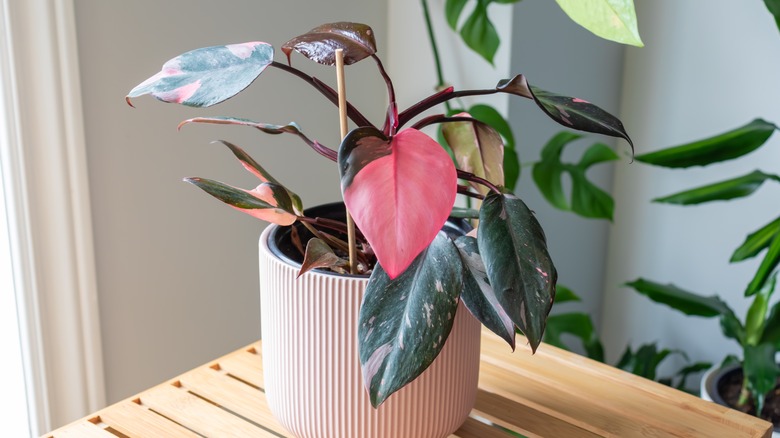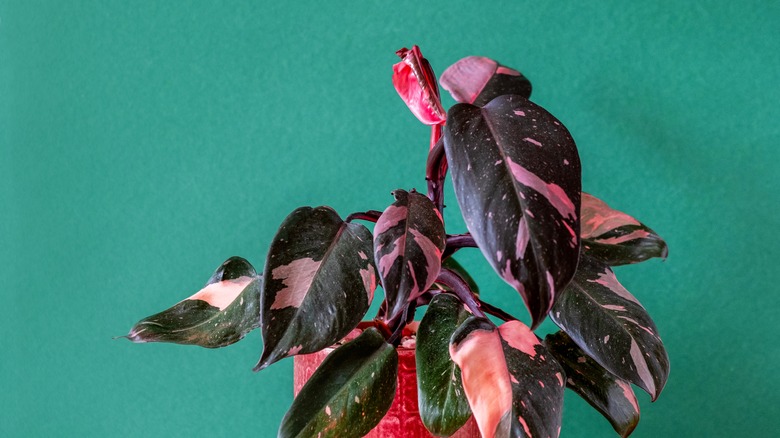Why You Should Cut Off Those Beautiful Solid Pink Princess Philodendron Leaves
The Pink Princess Philodendron is a variety of the Philodendron erubescens, and it's loved for its bright, bubblegum-pink leaves, which make it stand out on any backdrop. But although many people want to keep their Pink Philodendrons bright and pink, did you know that solid pink leaves can actually be harmful to the plant's overall health? As much as it might hurt to prune them, removing those leaves is actually essential for keeping your Pink Princess thriving.
While the bright pink leaves are beautiful, they're not contributing to your plant's well-being. The problem is that these solid pink leaves don't contain chlorophyll, the pigment responsible for photosynthesis – the process that converts sunlight into energy for the plant. Without chlorophyll, the leaves aren't pulling their weight. If your Pink Princess starts producing too many fully pink leaves, it will have a harder time gathering the nutrients it needs to grow strong and healthy.
In fact, too many solid pink leaves can cause the plant to weaken over time, resulting in slower growth or an overall decline in health. Cutting them off allows the plant to focus on producing more variegated leaves (the ones that are a mix of green and pink). What does variegated leaves mean for your plants? Well, it means they can perform photosynthesis while still maintaining that eye-catching color.
How to prune your Pink Princess the right way
Pruning your Pink Princess is a straightforward process, but it's important to do it properly and avoid harming the plant with common mistakes. Start by using clean, sharp scissors or pruning shears to ensure a clean cut and prevent the spread of bacteria or infections. Identify the leaves that are fully pink, along with any yellow or damaged leaves, and focus on removing them. It's best to cut the leaves just above the node, making sure the cut is clean and smooth to minimize stress on the plant. This will encourage more rapid regrowth of new leaves, creating a full and healthier plant. Don't overdue it though, and make sure to never prune more than a third of the leaves per season.
A healthy Pink Princess Philodendron is easy to spot when it produces a balanced mix of variegated leaves, where both green and pink are present. To ensure your plant stays healthy and maintains its variegation, make sure it gets enough indirect light, which encourages the production of green pigment without overstressing the pink areas. Avoid direct sunlight, which can scorch the leaves, and provide consistent watering, allowing the top inch of soil to dry out between waterings.

